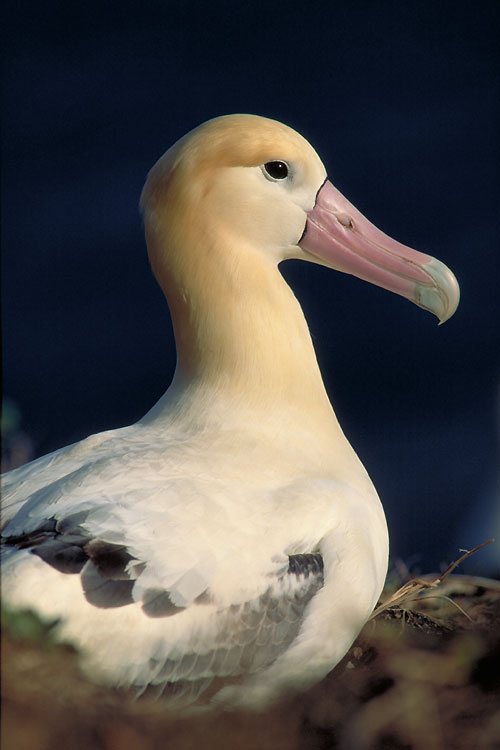The larger part of the relict population of the Short-tailed Albatross Phoebastria albatrus breeds on an active volcano (in geological terms). It is thus considered to be at permanent risk from a catastrophic event, which in turn has led to efforts to create a new breeding population on a non-volcanic island (click here).
But this albatross also faces threats of a more chronic nature, such as longline mortality and pollutants, less dramatic but also of serious concern.
In a paper published in the journal Biological Conservation this year, Myra Finkelstein of the University of California, Santa Cruz, USA and colleagues in Japan and the USA use a modelling approach to ascertain whether a volcanic eruption would be more injurious to population persistence than chronic threats. They conclude that chronic threats are more serious, pointing out that a volcanic eruption should affect no more than half the breeding population, and that population recovery will follow -as it has in the past. Recovery is due the species' wide-ranging foraging behaviour and high capacity for population growth as a presumed consequence of current high adult survival rates.
Modelling modest increases in mortality rates of juveniles and adults due to chronic threats (e.g. fisheries bycatch, contamination, disease) led to a substantially greater negative effect on population growth than did a catastrophic volcanic eruption. The authors conclude that a second population is vital to Short-tailed Albatross population persistence, not because of the active volcano, but because many unforeseen future chronic threats (i.e. introduced predators, disease) may jeopardize the population at its current main breeding colony.

Click here to access ACAP's Species Assessment for the Short-tailed Albatross.
Reference:
Finkelstein, M.E., Wolf, S., Goldman, M., Doak, D.F., Sievert, P.R., Balogh, G. & Hasegawa, H. 2010. The anatomy of a (potential) disaster: volcanoes, behaviour, and population viability of the Short-tailed Albatross (Phoebastria albatrus). Biological Conservation 143: 321-331 (click here for abstract).
John Cooper, ACAP Information Officer, 27 January 2010

 Français
Français  English
English  Español
Español